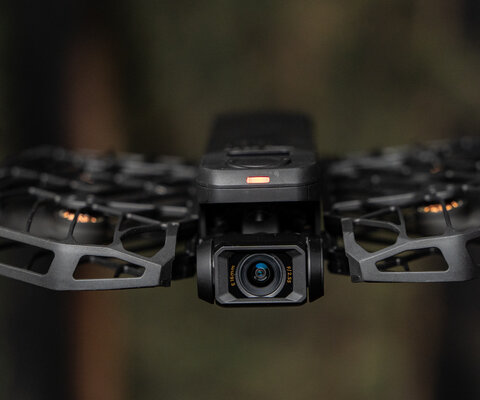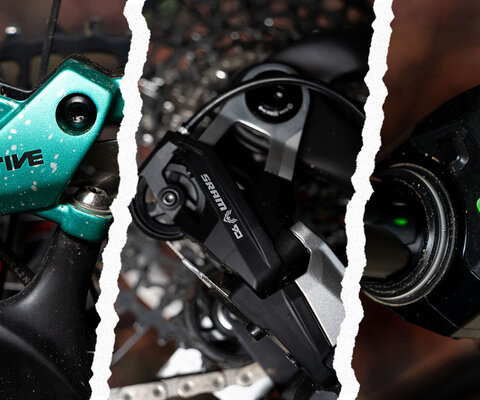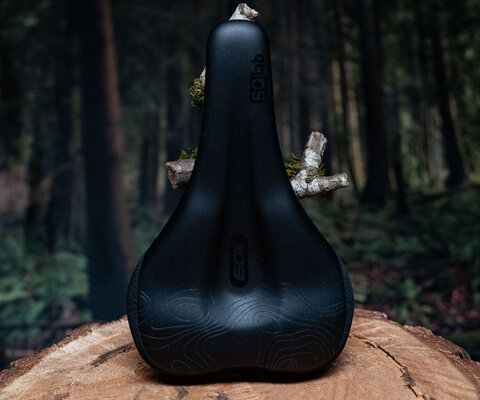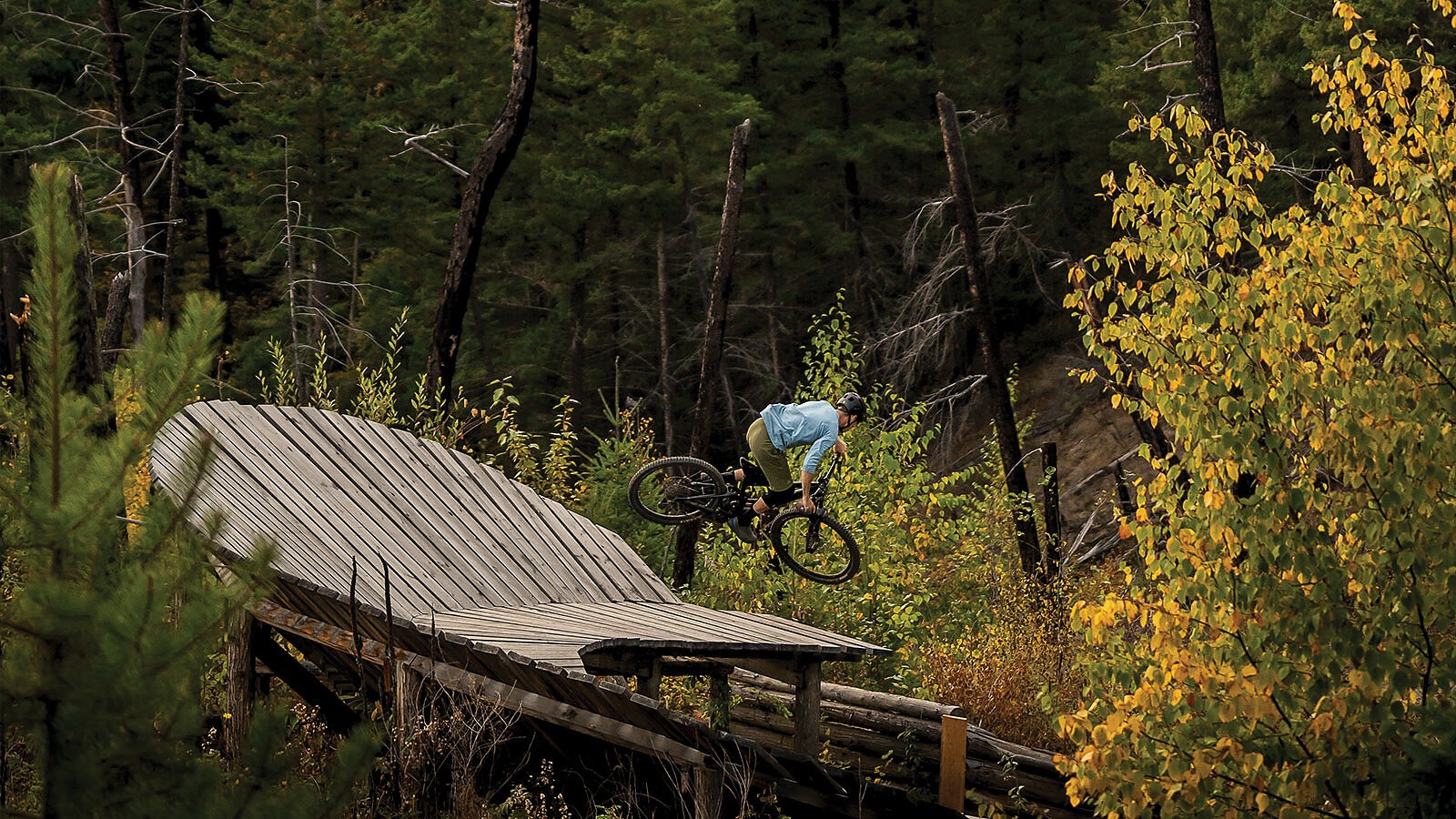
The Perfect Line James Doerfling Finds His New Path
Words by Patrick Lucas | Photos by Josh McGarel
I hear labored breathing through the speaker of my phone and a halting voice says, “Sorry, I’m just pushing my way up a hill in the forest, trying to find a new line for a trail.”
The voice belongs to James Doerfling , one of the world’s most influential big mountain freeriders and a professional trail builder. I’ve caught him out scouting for a new trail he’s going to build for the Williams Lake First Nation in British Columbia’s remote Cariboo Chilcotin region.
James has always had an eye for finding unique lines. As a young man, he started to explore the mountain ranges that surrounded his hometown of Williams Lake, B.C., with a few trusted friends. He spent countless hours surveying the rocky peaks, carefully studying ridgelines and spires for potentially rideable scree chutes. Few people could even imagine riding a mountain bike down such deadly terrain, but for James, what he saw was infinite possibility. He was an artist, envisioning his next masterpiece—one that he would expertly draw on an unforgiving canvas of rock and rubble.
For years, he threw himself down narrow flumes that dropped hundreds of feet between jagged spines, flowing onto near-vertical debris fields left behind from ancient landslides. He carved graceful, sweeping turns, kicking up long clouds of dust and inspiring a hearty handful of fellow freeriders to venture farther into the backcountry in search of first descents.
I first learned of James through a mutual friend, Thomas Schoen, owner of First Journey Trails, a company that has been building trails throughout the province since 2008. Thomas and I launched the Indigenous Youth Mountain Bike Program in 2014, with the goal of engaging Indigenous communities and getting youth onto the land to ride mountain bikes and build trails. Upon completing trails with several Secwépemc and Tsilhqot’in Nations, we threw an opening celebration that Thomas invited James to attend.

He put on an impressive demonstration, showing the youth what a professional could do on the tracks they had built with their own hands. Watching James ride was unlike anything I had ever witnessed. He tore down the trails with reckless abandon, hitting lines I didn’t think were possible and flying off jumps and drops with playful, exuberant joy. He literally brought the trail to life. And the kids loved it.
It was this knack for finding hidden lines and then cleaning them with elegant composure that consolidated James’ career as a big mountain freerider. Indeed, his drive to explore new realms on a bike was a seminal force in the niche discipline of backcountry freeriding, and his accomplishments earned him the admiration of his peers and multiple invitations to freeriding’s defining contest, the Red Bull Rampage in Virgin, Utah. In 2012, at the height of his competitive career, he registered an impressive sixth-place finish at Rampage.
But for the quiet, unassuming James, the pure joy of pioneering new lines was far more important than contests and results. And his connection to his community and the landscapes that shaped him as a rider were paramount. So, when record-breaking wildfires engulfed the entire Cariboo Chilcotin region in 2017, James chose to remain at home to help with the firefighting efforts, forsaking his coveted spot in that year’s Rampage.
As the wildfires spread quickly across 4,600 square miles of forest, Williams Lake was encircled by flames, forcing the evacuation of more than 14,000 people. James and his wife fled, abandoning the house they had recently bought together.
“My wife has horses and we brought them to the stampede grounds in Williams Lake, where they could be kept safe,” James says. “The sky was completely dark and filled with smoke, ash swirling around us. I couldn’t even see my hand in front of my face. It was terrifying.”
Determined to help protect his community, James joined the wildfire response, driving a skidder with a water tank. For the next several weeks, he followed behind the mop-up crews–groups of firefighters responsible for putting out hotspots. He witnessed the destruction of the land that had given him everything and watched the forests where he learned to ride transformed into endless swaths of blackened trees. The landscapes that had for so long inspired him lay bare and desolate, punctuated only by the smell of burned mud and woodsmoke.
After 15 years as a professional rider, James realized he was in the midst of a profound personal transition.
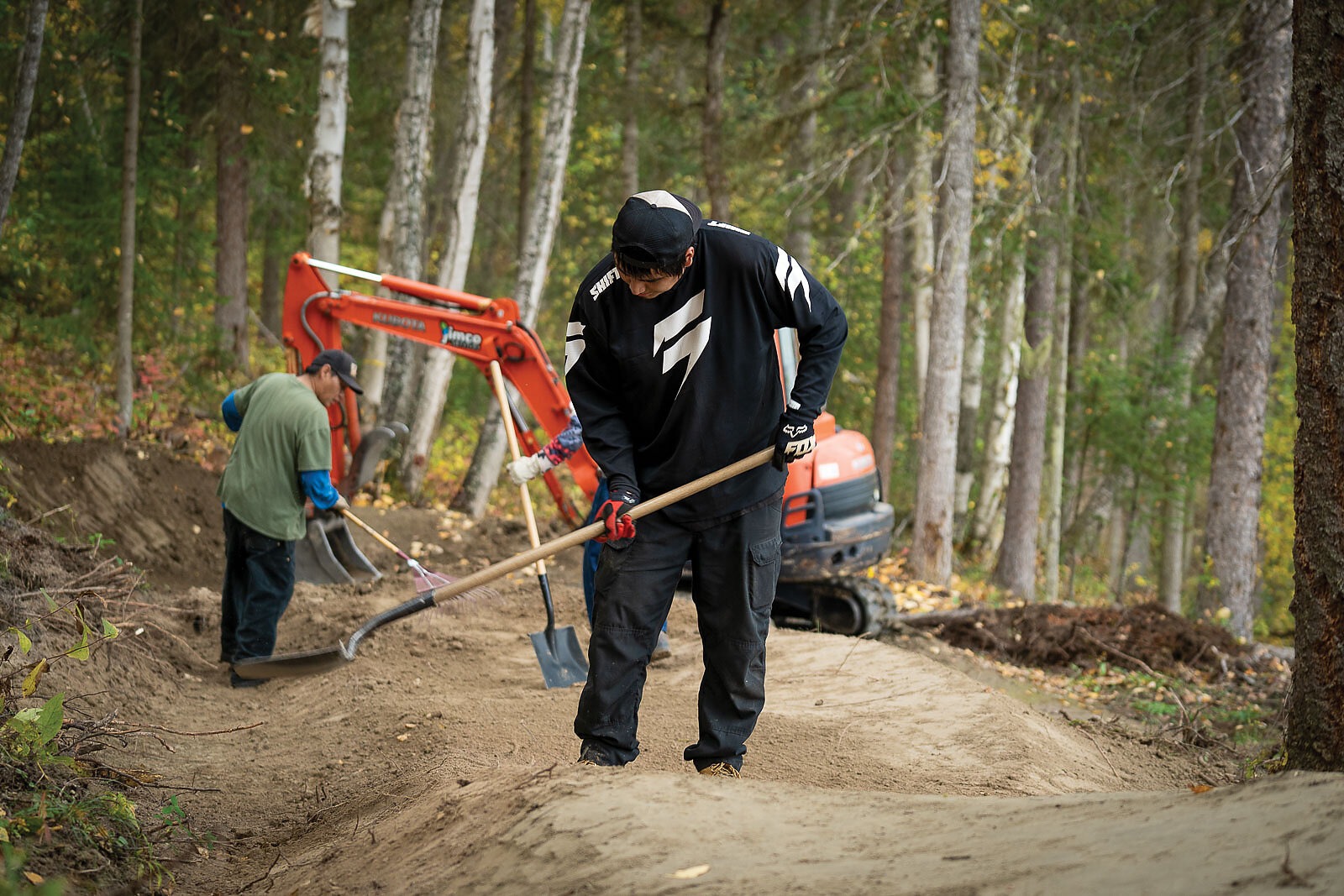
“My heart simply wasn’t in it anymore and I think that reflected in my riding at my last Rampage in 2016,” James says. “I needed to make a change, to find something new to feed the passion.
He approached his longtime friend, Thomas, about the prospect of purchasing a mini-excavator and partnering to build trails. He wanted to reconnect and rebuild, to create trails for the next generation of youth so they could experience the same closeness with the land he’d had while growing up.
“As long as I’ve lived in Williams Lake, I have followed James’ career as a pro rider,” Thomas says. “When he decided to retire from that life, it was an easy choice to join forces.”
Having spent several years working with First Nations as part of our Indigenous Youth Mountain Bike Program, Thomas and I had also watched with horror as the fires spread through the region, impacting many of the communities where we had built trails. But as the fires receded, we gained powerful insights into the link between trails and community resilience.
“No one got sick,” one Indigenous elder explained, describing how his people, forced into crowded shelters for weeks, managed to stay healthy and not succumb to the illnesses that can often afflict those subjected to trauma and stress-compromised immunity. The elder maintained that the daily practice of walking and riding on the trails, connecting to the land and nature, enhanced their ability to overcome the crisis and return even stronger, ready to rebuild.
We learned that many of the young men and women we’d trained as trailbuilders secured jobs as firefighters, becoming highly valued team members in the fight to protect their land. As the communities returned, they held communal rides to celebrate the trails that hadn’t been lost.
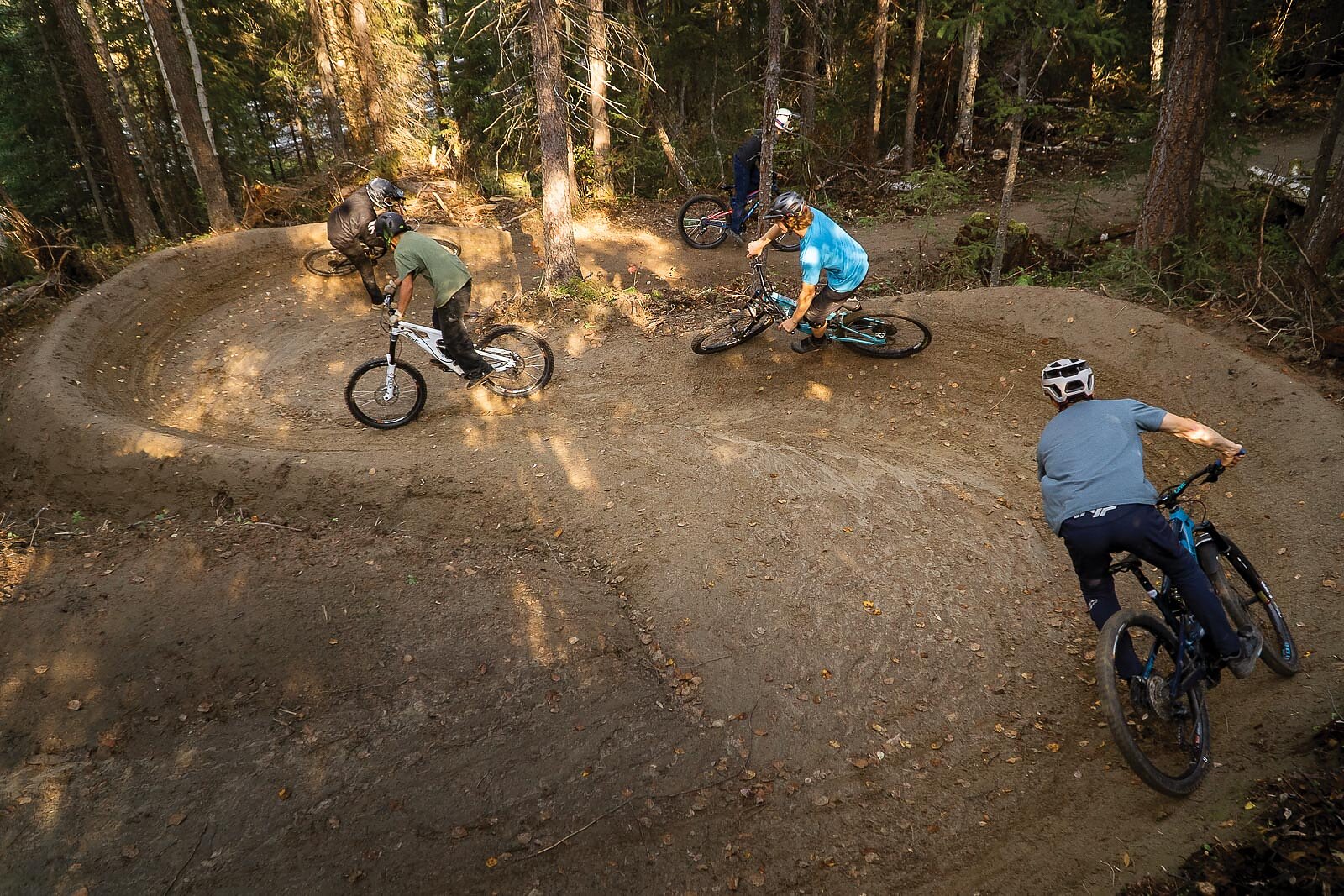
Inspired by these stories, we teamed up with James and launched the Trails to Recovery and Resilience program to enhance community well-being through trails. With the support of the Canadian Red Cross, we traveled throughout the region during the summer of 2018, building trails and training youth. James brought our team’s trailbuilding to a whole new level. He was in his environment, and once again he was finding perfect lines.
“James really sets a new standard for building community-oriented, multi-use trails,” Thomas says. “He’s building stuff that is super fun for beginners as well as advanced riders. That is what we should be building to get people outdoors, living healthy, active lives.”
Two years later, in the spring of 2020, we found ourselves working through an altogether new crisis. The global COVID-19 pandemic struck, bringing all of our projects to a halt. But James’ contagious enthusiasm and energy helped us find a way forward, and we were soon invited back to work with our First Nation friends, operating under strict COVID safety protocols.
James took the lead on a trail project with the Tsq’escenemc—the People of the Broken Rock (Canim Lake Band), a small Secwépemc community located about 75 miles southeast of Williams Lake, on the edge of the Shuswap Highland. The Tsq’escenemc were eager to provide opportunities for youth and other community members to get outside, build trails and ride their bikes. Once again, we learned how critical trails and outdoor recreation can be to bolstering community resilience in times of crisis—even during a pandemic.
Watching James build trails, it’s easy to understand how they end up being so much fun. He’s constantly on the move, jumping in and out of his machine, inspecting the terrain to ensure he can make the most of its natural attributes. For this project, James recruited his longtime friend and riding buddy, Jeremy “Jercan” Stoward. The two had spent years building trails together, and Jercan had helped James construct his runs during multiple Rampage contests. Together, they created an incredible multi use trail suitable for walking, running and riding, with berms, small tabletops and other features to keep things playful. The trail’s impact on the community was immediate
“JAMES REALLY SETS A NEW STANDARD FOR BUILDING COMMUNITY-ORIENTED, MULTI-USE TRAILS.” —Thomas Schoen
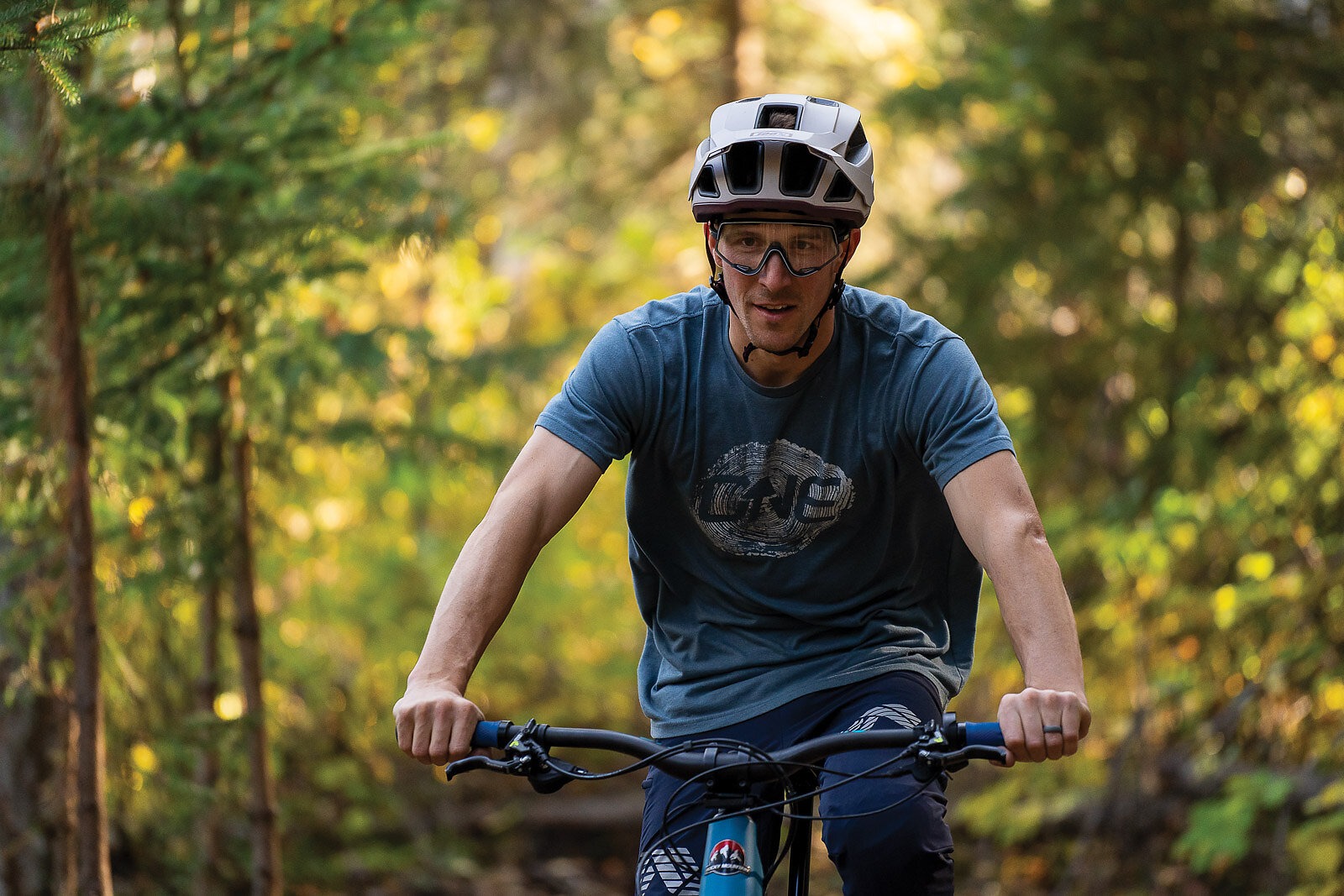
“We bought a fleet of bikes to start a community youth bike program,” says Tish Diamond, Tsq’escenemc’s youth coordinator. “And we see all manner of folks out using the trails, riding, walk- ing, running. It’s amazing.”
The project had a particularly profound impact on three of the young Tsq’escenemc men— Kyle Sellars, Dylan Onikamo, and Derek Christopher—who spent months digging and packing the trail as they followed behind James and Jercan.
“It was a life-changer,” Tish says. “One of the guys told me it has made a huge impact on his
life, and he is eager to get back out on the land building trails.”
For James, these projects have affirmed his belief in the power of trails to transform people’s lives, and they’ve given him an important counterbalance to his professional riding career. These days, he can select the events in which he wants to participate, allowing him to experience the pure joy of riding that prompted him to be a pro in the first place. Living with his wife and newborn baby in their Williams Lake home that survived the wildfires, James has found a rejuvenated connection to the land that shaped him.
“I’m way more excited now about building trails,” he says over the phone, continuing to push his way through a dense forest in search of his next trail alignment. “I don’t last a week at home before I’m itching to get back out on the land and in the forest, building.”
Suddenly, there is a slight pause, and I hear a sharp inhalation over the phone.
“OK, I have to go,” James says. “I found the perfect line.”
